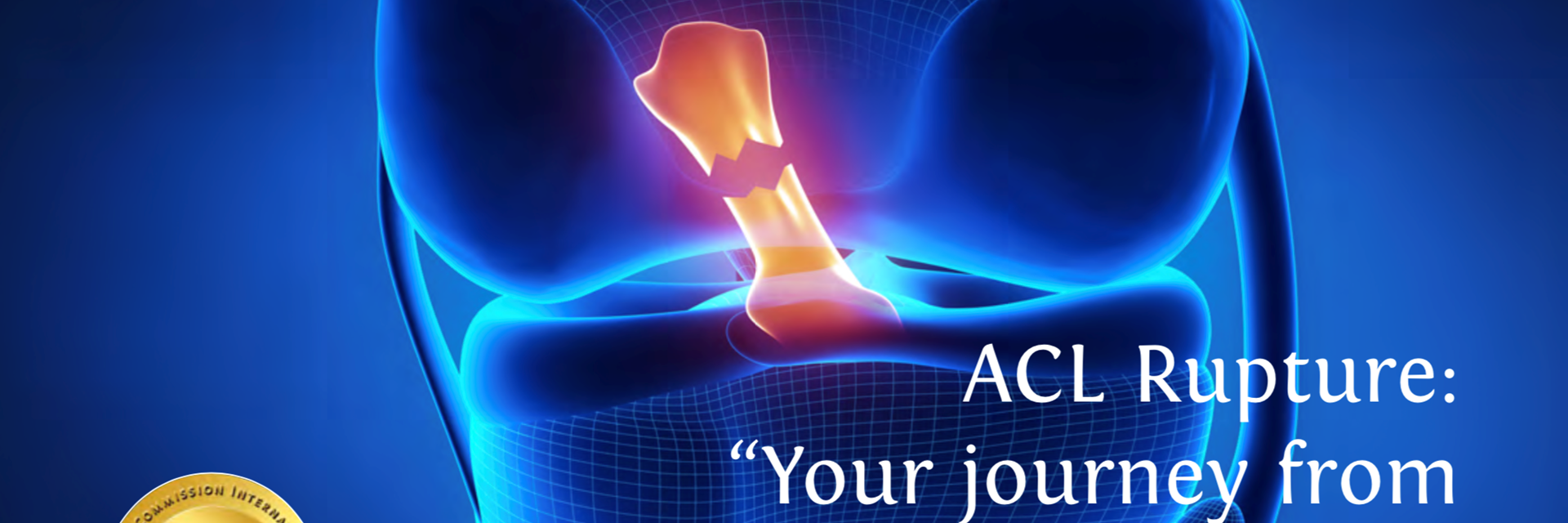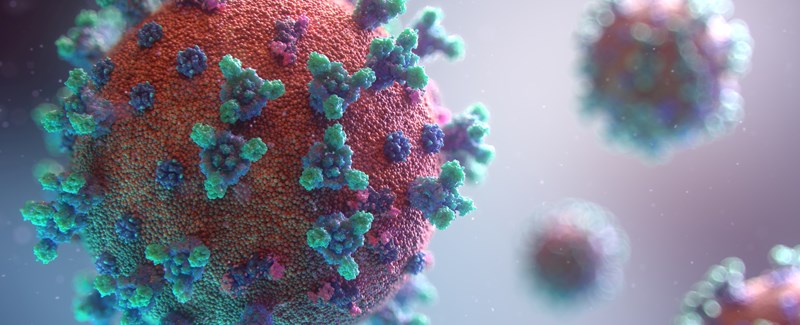HOW DO WE TEAR THE ACL?
HOW DO WE DIAGNOSE AN ACL RUPTURE?
WHAT IMAGING IS REQUIRED WHEN SUSPECTING AN ACL TEAR?
WHAT IS THE BEST ADVICE TO SOMEONE WITH AN ACL TEAR?
SHOULD EVERYBODY WITH AND ACL TEAR HAVE SURGERY?
MY SURGICAL TREATMENT FOR PATIENTS WITH ACL TEAR?
POST-OPERATIVE REHABILITATION?
RETURN TO SPORT?
RE-INJURY RISK?
CASE EXAMPLE
The anterior cruciate ligament (ACL) is a 36-40mm long band of fibrous tissue that connects the femur to the tibia. Its function is to control stability when performing twisting actions. The cruciate ligament is usually not required for normal daily living activities, however, it is essential in controlling the rotation forces developed during side stepping, pivoting and landing from a jump.
HOW DO WE TEAR THE ACL
The ACL is commonly injured whilst playing ball sports or skiing. Whilst playing ball sports upon attempting a pivot, side step or landing from a jump, the knee gives way. The foot is planted on the ground and the rest of the body rotates about the knee creating the force required to snap the cruciate ligament. When rupturing the ACL patients frequently hear or feel a snap, a pop or a crack accompanied by pain. They fall to the ground, stop playing and come off the pitch. Swelling commonly occurs within the hour. Frequently pain is felt on the outer aspect of the knee. Occasionally the medial ligament of the knee joint (MCL) may also be disrupted resulting in severe pain and swelling at the medial aspect of the knee.
HOW DO WE DIAGNOSE AN ACL RUPTURE?
The majority of the ACL ruptures can be diagnosed by:
1. Taking the relevant history from the patient.
This is the classical story that is given by the typical patient: “I twisted my knee with my foot on the ground or landed after a jump. I fell to the ground and felt the knee giving way. I felt a crack / pop or snap inside the knee with an intense pain. I couldn’t play on. My knee swelled up ’like a balloon’ immediately. When pain eventually settled I found it hard to bend my knee. Since then my knee gives way and I don’t fully trust it”
When hearing a similar story we should treat this as an ACL tear until proven otherwise.
2. Doing a clinical examination of the knee.
The patients may present at a variable interval (days or weeks/moths) complaining of their knee giving way during simple activities. When presenting early, within days of injury the knee is often stiff, swollen and painful. In these cases the examination is difficult and signs may be subtle. When presenting late (weeks or months) following injury the knee is often pain free, has full range of motion, it may be slightly swollen (small effusion) and is loose when testing for the ACL.
Taking as history as outlined above is often sufficient to raise the suspicion of an ACL injury.
WHAT IMAGING IS REQUIRED WHEN SUSPECTING AN ACL TEAR?
When we suspect an ACL injury we should request an X-ray (Both AP and Lateral) and an MRI of the affected knee. The X-ray will show if there are any fractures caused by the injury involving the knee. The MRI will outline the anatomy of the ligaments, menisci and chondral surfaces. It will diagnose the ruptured ACL and the associated injuries when present.
WHAT IS THE BEST ADVICE TO SOMEONE WITH AN ACL TEAR?
If the patient is in the acute phase (i.e. the first week or two after the injury) and the knee is still swollen, he/she should follow the RICE treatment principle: Rest, Ice, Compression and Elevation. For pain control he should take Paracetamol up to eight tablets a day. In the majority of cases we should encourage weight-bearing and range of motion mobilisation with no brace as pain allows. Sometimes depending on the associated injuries a knee brace allowing range of motion exercises could help.
When suspecting or dealing with a confirmed ACL injury we should refer the patient for further evaluation and treatment to an Orthopaedic Surgeon with an interest and sub-specialised training (Fellowship) in Sports Knee surgery.
SHOULD EVERYBODY WITH AND ACL TEAR HAVE SURGERY?
No, not all patients with ACL rupture should have surgery. The patients, along with their Orthopaedic Surgeon, should decide during the consultation what is the best treatment for them.
The goal of treatment for anybody with an injured knee is to return to their desired level of activity without risk of further injury to the joint. Treatment may be surgical or non-surgical. Patients who have a ruptured ACL and are content with activities that require little in the way of side-stepping (i.e. running in straight lines, cycling and swimming) may opt for conservative treatment. Surgical treatment cannot guarantee that further injury to the joint will not occur.
Conservative Treatment
Conservative treatment is by physical therapy aimed at reducing swelling, restoring the range of motion of the knee joint and rehabilitating the full muscle power. Intense proprioceptive training to develop the necessary protective reflexes is required to protect the joint for normal daily living activities. As the cruciate ligament controls the joint during changes of direction, it is important to alter your sports to the ones involving straight-line activity only. Social (non-competitive) sport may still be possible without instability as long as one does not change direction suddenly. Skiing is possible with conservative treatment. A brace and adherence to groomed runs may be required.
Surgical Treatment
Those patients who wish to pursue competitive ball sports, or who are involved in an occupation that demands a stable knee are at risk of repeated injury resulting in tears to the menisci, damage to the articular surface leading to degenerative arthritis and further disability. In these patients, surgical reconstruction is recommended. Surgery is best carried out on a pain free, healthy joint with a full range of motion. This is achieved with a pre-habilitation program supervised by a Physiotherapist.
MY SURGICAL TREATMENT FOR PATIENTS WITH ACL TEAR?
All reconstructive procedures for the ACL require a graft. My reconstructive technique involves grafting the torn ACL with segments of the patient hamstring tendons. This technique uses specially designed screws allowing secure immediate fixation of the tendon within the joint allowing for a rapid, early rehabilitation. Stabilising the joint protects the menisci and thus it may reduce the chances of developing later osteoarthritic degenerative changes. Although ACL reconstruction surgery has a high probability of returning the knee joint to near normal stability and function, the end result for the patient depends largely upon a satisfactory rehabilitation and the presence of other damage within the joint. Advice will be given regarding the return to sporting activity, depending on the amount of joint damage found at the time of reconstructive surgery.
POST-OPERATIVE REHABILITATION?
All patients will need to follow a specific rehabilitation protocol under the supervision of a local physiotherapist. This program will start immediately after surgery and will progress through various stages of training over the year following surgery. The protocol is available on this website under the ‘Rehabilitation’ section. The program is specifically designed around Mr. Vioreanu surgical technique and should be followed by the local Physiotherapist. During the rehabilitation period Mr. Vioreanu is always available to communicate with the patient and physiotherapist to ensure the appropriate protocol is followed and progress is being made constantly. Mr. Vioreanu will discuss in detail all aspects of the rehabilitation during the routine post-operative visits performed at 6 days, 6 weeks and 6 months after surgery.
RETURN TO SPORT?
Although ACL reconstruction surgery has a high probability of returning the knee joint to near normal stability and function, the end result for the patient depends largely upon a satisfactory rehabilitation and the presence of other damage within the joint. Advice will be given regarding the return to sporting activity, depending on the amount of joint damage found at the time of reconstructive surgery.
It has been previously reported that 80% of people will return to some form of sport, 65% will return to the same sporting level, and 55% will return to competitive sports within 1-2 years following ACL reconstruction
Playing sport non-competitively or training is possible at 6 months after surgery. A return to competitive sport is permitted at 9-12 months following surgery, provided that there has been a complete rehabilitation, including performing regular injury prevention programs (i.e. PEP or FIFFA 11+). These sports should be discussed with Mr. Vioreanu to establish a reasonable time frame for them to occur.
All athletes are recommended to take a 3D-video testing performed in the SSC Biomechanical Laboratory in order to assess their readiness to return to sport.
RE-INJURY RISK?
As one can imagine, the reconstructed ACL is not as strong as the native ACL and therefore a re-injury is not surprising for patients who return to sport and expose themselves to the same risks factors that led to their initial injury. The causes leading to re-injury are multifactorial and complex and they include: age, associated injuries, anatomy, rehabilitation, compliance to regular injury prevention programs, type of sport, type of reconstruction etc. Reported re-injury rates from around the world vary from 4-10% and are much higher (up to 30%) for younger population (less than 20 years old). These include injury to the normal, contra-lateral knee. Mr. Vioreanu re-injury rates after ACL reconstruction, since he has established his practice at SSC are less than 2%.
CASE EXAMPLE
"My name is David Ryan and I am sixteen years old. In October of 2015, I ruptured my left ACL playing basketball. Up until then I was an international athlete and played basketball at national level. After my injury, I was extremely worried that my dream of becoming an international athlete and Olympian was over. When I told people I had an ACL rupture, they gave me the impression that I would never return to sport again. On my first visit, I was reassured by Mr. Mihai Vioreanu that I could make a full return to sport, provided that I followed his rehabilitation protocol. I was also given the option of taking part in the SSC rehabilitation pathway which I gladly engaged in. I got lots of support from Mr. Mihai and his team and also from my local physiotherapist. I also got further reassurance from Mr. Mihai’s website and the fact that he was always available to contact. I won’t say the rehab was always easy but I kept going. After a year of dedicated work from myself, Mr. Mihai and my physiotherapist, I am happy to say I have made a full recovery. At my nine-month 3D Dimensional ACL Review, August 2016, I had one of the best scores the clinic had ever seen.
I am currently back to full training and I am on track to reach the World Youth standard in long jump and 400m. Mr. Vioreanu has also given me the inspiration to follow a career in medicine and surgery.
I am forever indebted to Mr. Vioreanu for my full recovery."




